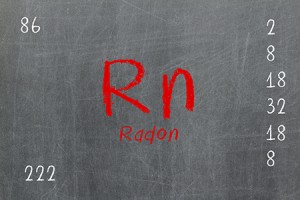Radon gas is a common – and silent – killer all across the world. In the United States, it accounts for more than 21,000 deaths every year and the same holds true for England according to a 2010 SEER (Surveillance, Epidemiology and End Results) analysis. It’s a natural decay product of various elements that reside in the soil such as uranium. Once emitted, radon gas can seep into a home through cracks in the foundation, walls and floors.
One of the only ways to discover the presence of radon is to test for it specifically. To remove it from a home or residence, a radon mitigation system must be installed. There are several types available, but essentially they all vent the gas out into the open air and out of a residence.
Researchers Developed a Molecular Cage to Filter Dangerous Gases Such as Radon
Thanks to some new research however, we may soon be able to filter toxic gases out of a home including radon. While gas filtering has been around for quite some time, lower concentration gases are more difficult to vent this way. Researchers at the University of Liverpool, in collaboration with the Pacific Northwest National Laboratory have produced a new type of material that can filter through atomic selectivity. What that means is that the filter system uses a special type of molecule, called CC3, to trap atomic gas particles of a specific size. Atoms or particles with different dimensions than the filtration system are allowed to pass through freely.
“By a process of adsorption – where molecules or atoms stick onto the surface – the right gas molecules are held in place, while others such as water or nitrogen are released.”
It works as a sort of molecular cage to trap various atoms. The practice itself has been around, but it has never been applied to noble gases.
The Technology May Be Used in the Future to Eliminate Dangerous Gases in Homes
Of course, at this time the research is only being used to study the cage structure and process. It will be quite some time before we see it being applied in the real world. Unfortunately, that means for the time being there will be no radon filtration systems, outside of exisiting mitigation measures which simply vent the gas – as opposed to blocking it out.
That said, this is great news for the future. As home manufacturers are required to incorporate radon resistant construction in new homes, it’s possible these CC3 atom cages may also become commonplace someday.
If you’d like to read more on the topic, you can visit the University of Liverpool website.



